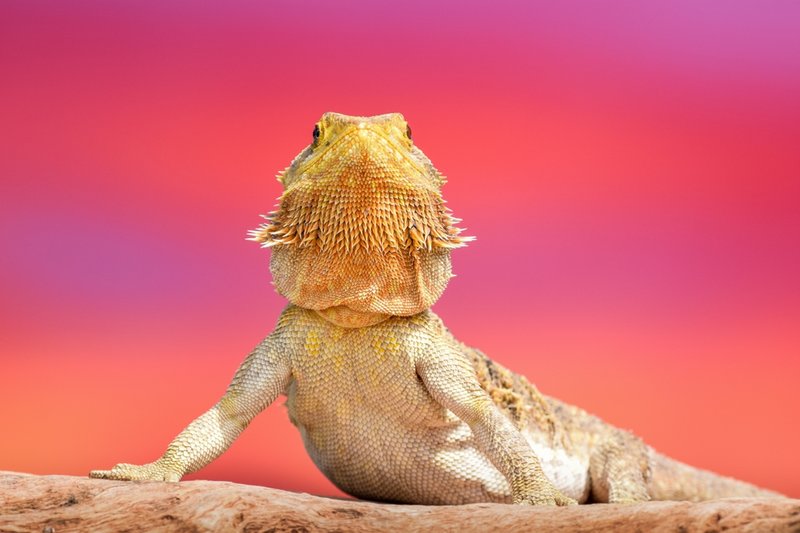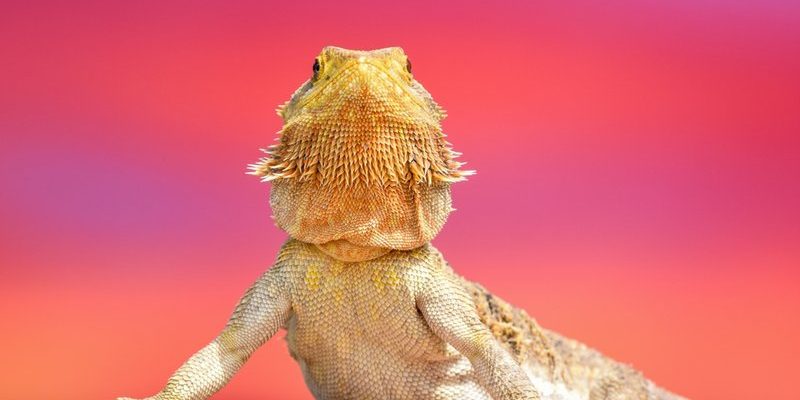
Understanding Bearded Dragons: A Quick Overview
Before we jump into identification tips, it helps to know a bit about bearded dragons themselves. Scientifically known as *Pogona* spp., these reptiles are native to Australia. Most commonly found in arid and semi-arid environments, they flourish in habitats that provide both sun and shelter. While they are often kept as pets, seeing them in the wild is an entirely different experience that can deepen your appreciation for them.
One interesting thing about bearded dragons is their name. They have a flap of skin under their throat, which expands when they feel threatened or want to assert dominance. This display can look like a “beard,” hence the name. Keep this in mind; it’s a critical feature that can help you identify them in the wild.
Physical Characteristics: Size and Shape
When looking for bearded dragons in the wild, the first thing you’ll notice is their size and shape. Adult bearded dragons typically grow to about 18 to 24 inches long, including their tail. They have a stout body with a broad, triangular head.
Now, if you’re trying to identify one from a distance, remember they have a distinctive, *flattened body shape*. This allows them to bask comfortably on rocks or branches. If the lizard you’re observing has a rugged, dragon-like appearance, there’s a good chance you’re looking at a bearded dragon.
Coloration and Patterns
Another key feature to watch for is their coloration. Bearded dragons can display a range of colors, from sandy browns and tans to vibrant oranges and yellows. Their skin can also have various patterns, including stripes or spots, which help them blend into their environment.
If you see a lizard basking in the sun, pay close attention to its color. When threatened or excited, bearded dragons can change colors slightly, becoming darker or more vibrant. This color change is not just for show; it’s a way for them to regulate their body temperature, absorbing more heat from the sun.
Behavioral Cues: How They Move
Now, identifying a bearded dragon isn’t just about how they look. Their behavior also provides clues. Bearded dragons are generally calm and relatively slow-moving, especially when basking. However, if they feel threatened, they can sprint surprisingly fast or puff up their beards to appear bigger.
While observing one, take note of how it moves. Are they quickly darting around or lounging in the sun? A bearded dragon might be soaking up warmth on a flat rock or scrabbling along the ground in search of food. Their movements can tell you a lot about what they are doing at that moment!
Territorial Behavior
You might also notice some territorial displays, especially during mating season. Males will often perform head bobs or push-ups to establish dominance. This behavior can help you determine whether what you’re looking at is a male or female, with males being more prone to these displays.
Habitat and Location: Where to Find Them
Understanding the habitat of bearded dragons is essential for locating them in the wild. They typically thrive in dry, bushy areas, and you can spot them basking on rocks, branches, or even on the ground. Look for them in regions like open forests, scrublands, and grasslands—places where they can easily hide from predators while still catching the sun’s rays.
Another aspect to consider is the time of day. Bearded dragons are diurnal creatures, meaning they are most active during the day. So, if you’re on a search, plan your adventure for the morning or early afternoon when they’re most likely to be out soaking up the sun.
Signs of Presence
Sometimes, you might not see the dragons directly, but you can look for signs of their presence. A pile of shed skin—it’s a common occurrence since these lizards shed as they grow. Also, look for characteristic tracks in the dirt or signs of their feeding habits, such as small bits of foliage that have been nibbled on.
Interacting with Bearded Dragons: Safety First
If you do spot a bearded dragon, remember to keep your distance. Approaching too closely can scare them, causing them to flee into hiding. Enjoy the moment and capture it with your camera, but give them the respect they deserve as wild creatures.
It’s essential to understand that while they can be quite docile, wild bearded dragons should not be handled. This isn’t just about respecting their space; it’s also crucial for your safety. These lizards can bite if they feel threatened, so admire them from afar.
Respecting Wildlife
When observing these fabulous reptiles, practice ethical wildlife observation. Avoid disturbing their habitat or disrupting their natural behavior. This ensures that future generations can also enjoy the thrill of spotting a bearded dragon in the wild.
Identifying a bearded dragon in the wild is a rewarding experience that requires a keen eye and a bit of patience. By focusing on their unique physical traits, behaviors, and habitats, you’ll be well-equipped to spot these intriguing reptiles. Remember, it’s all about respecting nature and soaking in the moment as you enjoy the beauty of the outdoors.
So next time you find yourself exploring the breathtaking landscapes that bearded dragons call home, use these tips to enhance your adventure. Who knows—you might just discover a new appreciation for these fascinating creatures! Happy hunting!

